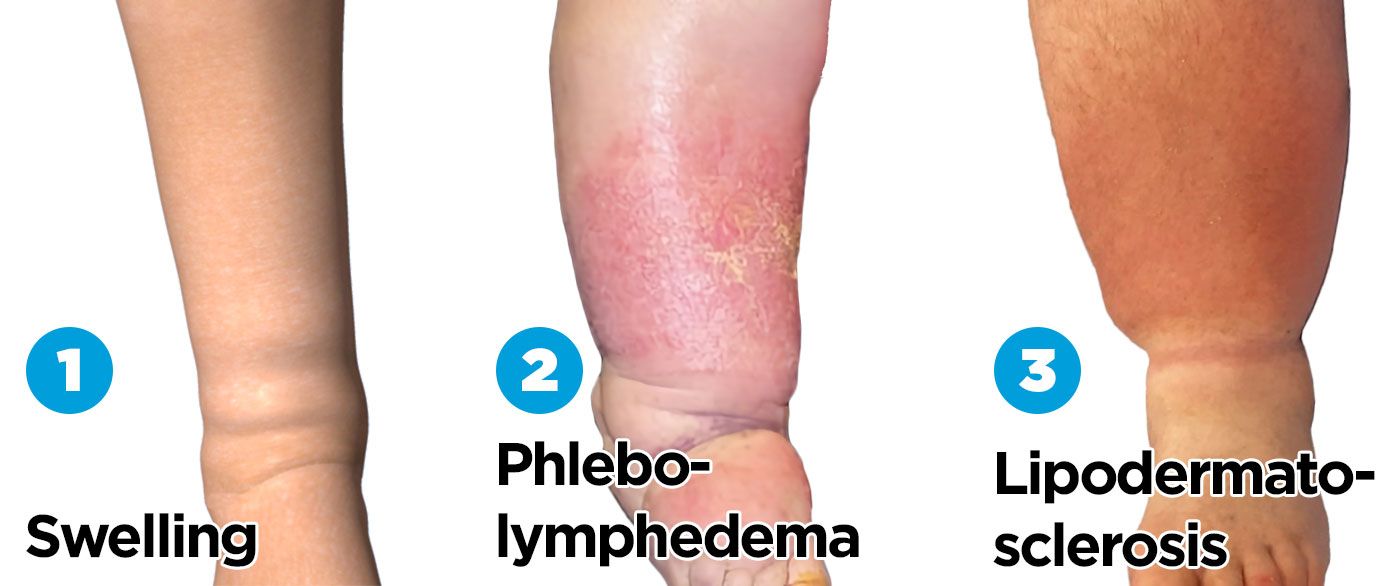
Leg Swelling
Swelling in the legs can be a sign of poorly functioning veins in the legs. When veins fail, blood that normally flows upwards toward the heart is pulled by gravity to pool inside the legs. The backflow, called venous reflux, strains the vein walls and blood plasma leaks out into the surrounding space in the legs leading to swelling in the feet, ankles, and calves. Leg swelling and associated skin changes are termed chronic venous insufficiency (CVI).
Modern treatment options available for the treatment of the diseased veins are safe, effective, and require no downtime. Almost all insurance companies offer coverage for the treatment of symptomatic vein problems.
Edema is primarily noted at the end of the day that improves with leg elevation. Left untreated, the accumulation of fluid inside the legs overwhelms the lymphatic system which works as a safety valve to move excess fluid out of the legs and becomes phlebolymphedema. Fluid accumulation in the leg is a combination of plasma and protein-rich fluid that triggers an inflammatory reaction and fibrosis (hardening of the skin and soft tissue) which is irreversible. Treatment of lymphedema is limited to manual compression therapy and lifelong use of compression garments.
